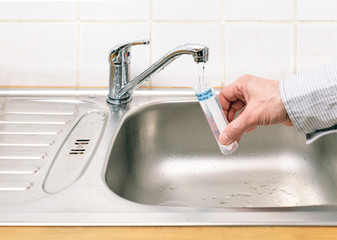Whether you are a homeowner looking to check the quality of the water that you use in your home, a business owner who wants to know what’s in the water that you sell or a scientist who wants to know the chemical composition of the water that you use, there are several different tests that you can do. These tests include Total Coliform Bacteria, pH, Hardness, Conductance, Per- and Polyfluoroalkyl Substances (PFAS), and SimpleWater Tap Score.

The hardness test is the most common analytical tool in Water Quality Testing Colorado. It can tell you how hard your water is and indicates whether it is corrosive to metals. There are several types of tests. Some test for chlorine, others for other kinds of buildup. Generally, a higher mineral count is a good indication of hard water.
Performing pH of water quality testing is an important part of protecting the health of humans and animals. It provides a way to find potential problems with a water source and determine whether it is safe to drink or use.
A pH test is a measure of the concentration of hydrogen and hydroxide ions in a liquid. It is also a good way to determine whether a liquid is basic or acidic. The scale varies from one to fourteen, with seven being the neutral point of reference.
Various factors affect the conductivity of water, including temperature, flow, and salinity. Water quality testing is important for a number of reasons. High conductivity may indicate pollutants or other indicators of poor water quality. In addition, a large concentration of dissolved solids (TSS) can have a negative impact on fish and wildlife.
TDS is commonly measured by gravimetry, a method that uses a standard ratio to estimate the amount of dissolved material in a body of water. The concentration is reported in parts per million.
Most water hardness tests report in grains per gallon (gpg). The term was originally used to refer to the weight of a dry wheat kernel. The gpg equivalent is calculated by dividing the total hardness level by 17.1. There are also other ways to measure hardness. Some laboratories report the number of grains per liter, or mL, while others report in parts per million.
Detection of total coliform bacteria in water quality testing provides important information about the health of the drinking water system. The presence of total coliforms signals a problem with the treatment or disinfection of the water or may indicate bacterial regrowth in the system. Several types of culture-based methods can be used for detecting total coliforms.
When total coliform detection occurs, the system owner should investigate the source of the contamination. The system should be corrected if the problem is traceable to an improperly installed sanitary component. Similarly, if the coliforms are associated with the growth of biofilm, the distribution system should be inspected to find a pathway for the organisms.
PFAS are man-made chemicals that are known to cause health impacts. They are used in many consumer products and industrial applications, such as paints, fire-fighting foams, and water-resistant materials. These chemicals are found in air, dust, soil, and drinking water.
These substances have been linked to cancer, immune system dysfunction, and other health impacts. They are considered to be more toxic to children and pregnant women. The United States Environmental Protection Agency (EPA) has established a lifetime health advisory for PFAS.
Various types of testing are carried out on water to determine its quality. These include physico-chemical, chemical, and biological tests. The type of testing that is most suitable for a given parameter depends on its requirements.
Physico-chemical parameters include pH, temperature, and dissolved oxygen. These are important indicators of the quality of a water sample. The lowest pH value indicates acidity. The highest pH value is a good indicator of alkalinity. The optimum pH value for drinking water is between 6.5 and 8.5.
Whether you are a good owner, a professional, or want to make sure that your water is safe, Tap Score is a great choice. This at-home testing program analyzes your home’s water and provides a thorough report in a simple graphical format. It includes an easy-to-read report and helpful treatment recommendations.
The Water Quality Index test is a great choice for good owners because it uses publicly available data to produce a quick and reliable report. The test covers a wide range of contaminants.
Aside from a few notable exceptions, the state does not offer discounted well testing. However, in addition to the requisite oleaginous testing, it does provide a bevy of informational resources for those interested in learning more about their source of freshwater. Among other things, it offers an online water quality interpretation tool that can be used to assess the performance of a given water sample.